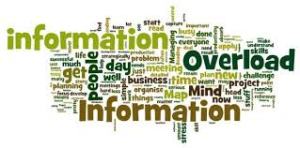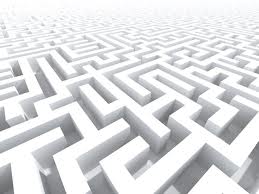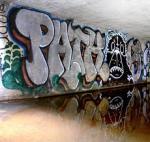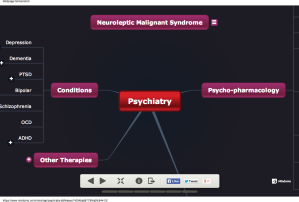Information Overload and The Erosion of Attention:
update: 17 Feb 2014, a portion of this blog post appeared in Latin Business Today
Recently, I found myself distracted by an irrelevant search result, which started as a curious collection of tag terms, prompted by my job search rubric, that followed a path of links I can’t even recall and ended up at a video of a TED Talk on the new age of worker productivity by Daniel Pink and the failure of incentives in the new work place.
Whew! See what I mean.
It seems that work, job searching and life have become a mad, multi-tasking scramble. So, I attended a lecture of the Murray Hill Institute where a discussion was facilitated by invited lecturer, Maggie Jackson author of the book, Distracted – The Erosion of Attention and the Coming Dark Age. Her observation – “tech use in American society is eroding our capacity for deep attention — the core building block of intimacy, wisdom and cultural progress.”
With this starting point Jackson proposes that we need to recapture focus and thrive not just survive, in this age of ubiquitous connectivity. Citing several examples, such as the tragic incident of texting while driving, as seen in the recent commuter train disasters; and the embarrassing behavior of Italian Prime Minister Silvio Berlusconi busy texting in plain site of waiting diplomats and dignitaries, Jackson commented that these are just mild examples of a hyper-mobile, übercyber-centric populous that is leading to an attention-deficit disorder.
What I think, we are really experiencing:
I submit, that in today’s workplace, we are burdened with too much required attention.
We are living and working under the notion of a 24x7x365 scenario leading to the growing demand for and on the multi-tasker. The outcome of anytime, anywhere connectivity, the result of technological breakthroughs at the device level (e.g. Smartphones, netbooks or mini laptops) and internet-based messaging and media services like Twitter, email, internet and wireless voice, data and images transactions, have the chilling effect of never feeling you’ve left the office or better yet – blurring the boundaries of work/life balance. And as we further see the world flatten, what might be most alarming, is we begin to lose our ability to conduct deep thoughtful analysis of problems as well as lose sight of the value in face to face communications. How can a culture consistently beset with knowledge accelerators, with little time for exploration of conceptual clustering pass on the wisdom of experiences to the next generation? How can a culture driven to distraction evolve to meet the needs of improving performance?”
From here on, if you follow my blog you will see some familiarity with one other of my writings, a newsletter interview I did on tech marvels of connectivity – a blessing or a burden – and the savvy needed to take control of an on-demand work environment.
For one thing, technology studies suggest that the half-life of new technologies is getting shorter. This further accelerates the phenomenon of feeds and speeds.
So it would seem that techno-gadgetry is in fact enabling our multi-faceted powers of attention and in turn helping us surmount barriers of time, of speed, location, overload and diffusion.
Evidence of Attention Overload eroding creativity:
However, a significant portion of evidence points to a shifting effect. One I find of interest are those covering the influence of multitasking. In today’s workplace it seems so much more effort is necessary, just to maintain status quo. Lagging self-discipline, an inability to increase focus, result in only accomplishing a “shallow” understanding of problems and issues as opposed to greater depth of perceptions leading to solutions. This is sometimes referred to as the “Red Queen Effect”. The result: In an effort to be relevant to a large, complicated company, the ADD culture will remain for awhile.
I will agree that information overload makes for only a “shallow” perspective and under minds the creativity that is now necessary for the 21st century worker. But as businesses continue to face irreconcilable forces that usurp old assumptions of profit and loss, the information overloaded-distracted worker cannot afford to get mired in abstractions.
Conclusion:
By Jackson’s own admission, her book is more a narrative with well-meant appeal than a treatise offering insights and solutions. And while this talk has definitely raised my awareness for the issues she writes about; the warnings are not new, and have been talked about by educators, journalists and writers, government leaders for decades – certainly, ever since the creation of the television media culture which has been been decried as the ‘end of American Intellegencia’ since I was a kid.
As Jackson mentions, during her lecture at MHI, we are now beginning to notice the impact in an erosion of attention, and in an inability of American culture to maintain focus on long-term goals. How likely is this problem to be resolved? Not likely under the current economic cycle that pits employees against one another to retain jobs and relevance in organizations. In the pursuit of productivity and efficiency gains, corporations have found anxiety and exhibit ADD. The demand to perform and out perform the competition has become overwhelming and, the largest corporations confess in the media and in recent polls that they have produced progress reports and launched major campaigns that were less that forthcoming.
Corporations think from quarter to quarter. Not much time for thoughtful exploration.
Well, one can always give up texting for Lent.
LinkedIn public profile http://www.linkedin.com/in/teresitaabaykrueger

 e coming year. I’m quite familiar with this exercise over the better part of my career with IBM, where it took a calendar year to collect, comment, analyze and vet the avalanche of technology ideas on the horizon.
e coming year. I’m quite familiar with this exercise over the better part of my career with IBM, where it took a calendar year to collect, comment, analyze and vet the avalanche of technology ideas on the horizon.



